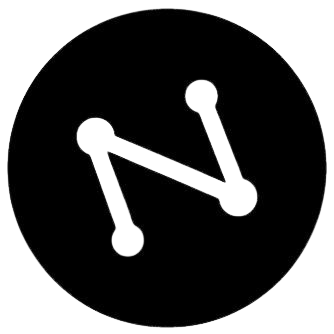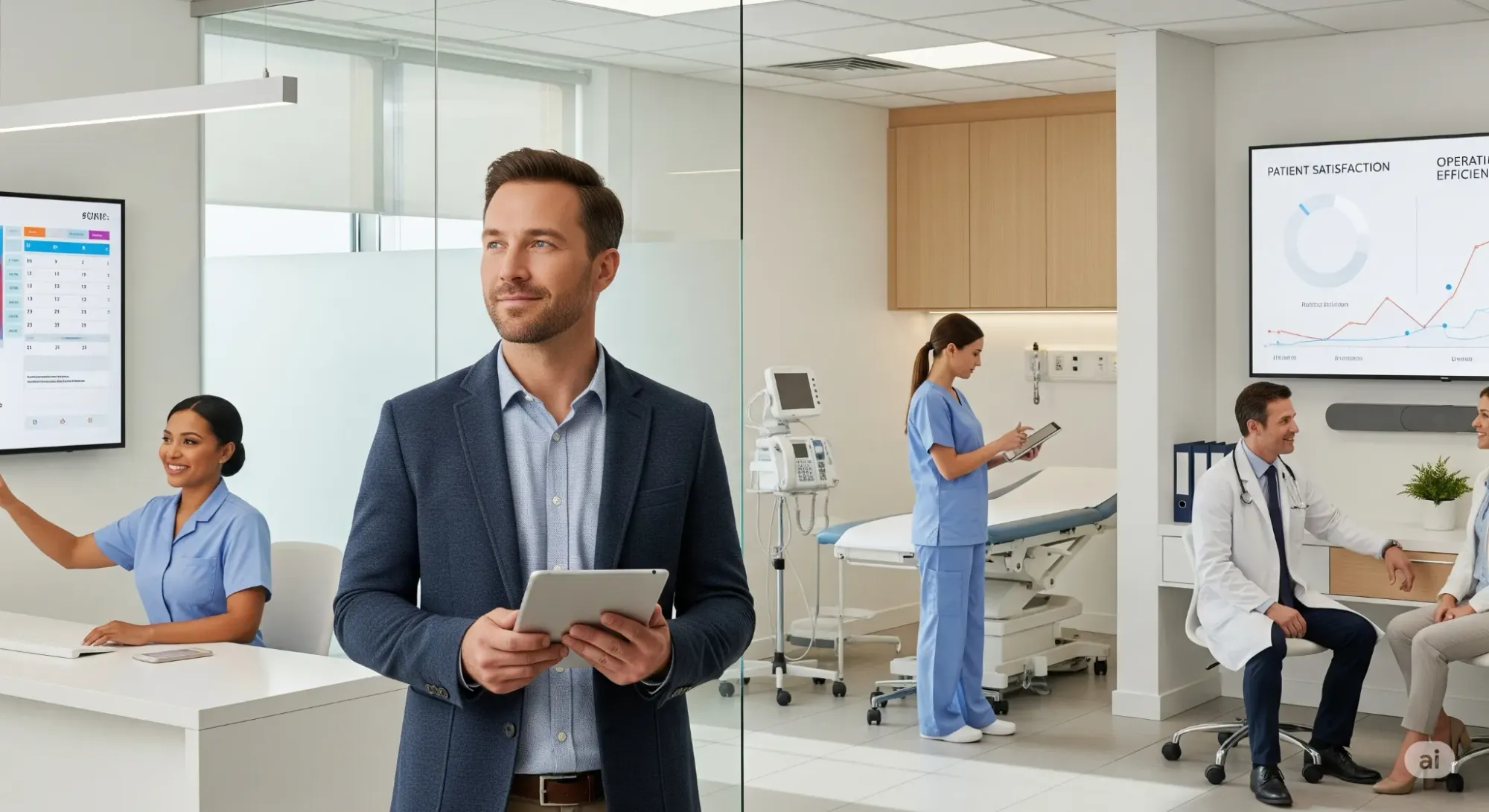
The productivity of your professionals is a cornerstone for the success and sustainability of any clinic, regardless of its size or specialty. When properly monitored and optimized, productivity leads to increased revenue, a better patient experience, and greater team satisfaction. On the other hand, failures in this area can create operational bottlenecks, waste resources, lead to staff burnout, and cause a decline in the quality of care.
With the evolution of digital tools and access to real-time data, it has become more feasible for healthcare managers to adopt a systematic approach to measuring and enhancing productivity. This in-depth article covers how to calculate, monitor, and improve the productivity of professionals in your clinic in a balanced and strategic way.
Before we continue, we need to ask: Are you already familiar with Ninsaúde Clinic? Ninsaúde Clinic is a medical software with an agile and complete schedule, electronic medical records with legal validity, teleconsultation, financial control and much more. Schedule a demonstration or try Ninsaúde Clinic right now!

Understanding the Concept of Productivity in Healthcare
Productivity, in a clinical context, is the relationship between the resources used (time, infrastructure, effort) and the results achieved (appointments, resolution rates, revenue). It's not just about quantity, but also about efficiency and quality. In multidisciplinary clinics, the challenge is even greater, requiring the analysis of different types and lengths of appointments.
The main productivity indicators (KPIs) in healthcare are:
- Number of appointments per professional: Measures workload and serves as a baseline for other analyses.
- No-show rate: A critical indicator that represents direct revenue loss and wasted professional time.
- Average appointment time: Helps validate whether scheduled time slots are realistic, indicating a need to optimize processes or adjust the schedule.
- Revenue generated per professional: Essential for understanding the financial impact of each team member and the profitability of services.
- Treatment resolution rate: Measures the effectiveness of care (e.g., patients who do not return due to relapses). A high rate indicates quality and strengthens the clinic's reputation.
- Schedule utilization rate: Compares available slots with those actually filled, revealing idle time and opportunities for booking.

How to Calculate Professional Productivity
The calculation can vary depending on management goals. Below, we highlight three central approaches:
1. Gross Productivity This measures the number of appointments conducted over a specific period. It is the most direct indicator.
- Formula:Gross Productivity=Time Period (days or weeks)Total Number of Appointments
- Example: A physical therapist who conducted 100 appointments in 20 business days had a gross productivity of 5 appointments/day.
2. Adjusted Productivity This offers a more realistic view by considering the hours that were actually available, subtracting no-shows and empty slots.
- Formula:Adjusted Productivity=Total Available Appointment SlotsAppointments Conducted
- Usefulness: It shows the professional's actual efficiency during their productive time, making it a fairer metric for performance evaluations.
3. Financial Productivity This evaluates the financial return generated by the professional, usually measured by the average ticket.
- Formula:Financial Productivity=Number of AppointmentsRevenue Generated
- Usefulness: It is fundamental for clinics with a variety of procedures and prices, helping to focus on the most profitable services.

Essential Tools for Monitoring
Calculating these indicators manually is inefficient. Integrated management systems are crucial for automating data collection and analysis. Platforms like Ninsaúde Clinic centralize information and offer resources such as:
- Customized reports on appointments and billing.
- No-show analysis with automated appointment confirmations.
- Commission calculations based on productivity rules.
- Visual dashboards for real-time tracking.
The system's smart schedule is also an ally, as it allows for the identification of patterns, peak hours, and opportunities to rebook appointments.
Practices to Improve Productivity in the Clinic
After measuring, the next step is to optimize. Here are some effective strategies:
1. Strategic Schedule Optimization A well-organized schedule is the foundation of productivity.
- Appointment Blocking: Define fixed blocks for specific types of services (e.g., mornings for consultations, afternoons for procedures). This optimizes the professional's workflow and resource use.
- Automated Reminders: Use automated confirmations and reminders via WhatsApp or email to drastically reduce the no-show rate.
- Smart Waitlist: Maintain an active waitlist to quickly fill slots from cancellations, minimizing idle time.
2. Standardization of Protocols Standardization creates a predictable and agile workflow.
- Clinical Protocols: Adopting evidence-based protocols speeds up decision-making, ensures quality, reduces errors, and facilitates collaboration among the team.
- Administrative Workflows: Standardize tasks like check-in, billing, and follow-up scheduling to reduce the burden on support staff and free up healthcare professionals.
3. Use of Structured Electronic Health Records (EHRs) Optimizing documentation time is fundamental.
- Forms and Templates: EHRs like those in Ninsaúde Clinic allow you to create custom anamnesis templates by specialty, which guides the professional and speeds up data entry.
- Structured Data: Use mandatory fields and predefined options (lists, checkboxes) to streamline documentation and make it easier to extract data for future reports.
4. Continuous Training and a Feedback Culture A well-prepared and aligned team is naturally more productive.
- Training: Conduct regular training on the efficient use of the clinic's software, new protocols, and patient care techniques.
- Constructive Feedback: Present monthly reports with individual indicators, compare them to goals, and, most importantly, talk with the professional to understand their obstacles and how management can help.
5. Well-Structured Performance Incentives Variable compensation can be a motivator if implemented carefully.
- Balance Between Quantity and Quality: Create a commission system that rewards multiple factors, such as volume, revenue, and, crucially, patient satisfaction. This prevents the quality of care from being sacrificed for speed.

The Patient Experience as a Catalyst for Productivity
A strategic point is to understand how the patient experience affects productivity. Satisfied and engaged patients tend to show up for their appointments more consistently (reducing the no-show rate), adhere better to treatment (increasing the resolution rate), and respect schedules, which leads to a smoother and more predictable workflow. Therefore, investing in good customer service and a welcoming environment is an operational optimization strategy.
Continuous Monitoring: The Key to Sustainability
Productivity management is a cycle. Create a bi-weekly or monthly routine to:
- Generate productivity reports.
- Analyze the data, comparing it with goals and previous periods.
- Identify areas for improvement and best practices.
- Share the data transparently with the team to engage them.
- Re-evaluate processes every quarter.

Balance is Key: Productivity with Well-being
It is essential to separate productivity from overload. The focus should be on eliminating waste (idle time, rework) to optimize workflow, not simply increasing pressure. A strategy that leads to burnout is unsustainable and will result in a drop in quality and high staff turnover. Promoting breaks and actively listening to team feedback are essential components of productive and humane management.
Towards a More Efficient and Balanced Clinic
Calculating and improving productivity in the clinic is a process that requires planning, the right tools, and a culture of continuous improvement. With well-defined indicators, technological support, and leadership committed to both efficiency and well-being, it is possible to achieve significant gains in revenue, quality, and satisfaction. Investing in productivity is, in essence, a strategy for valuing your team's time and the quality of care delivered to your patients.
Liked the information? Then prepare for a continuous journey of knowledge by following our blog. Are you a health professional and not yet familiar with the benefits of Ninsaúde Clinic? Stay ahead, optimize your processes, and elevate excellence in patient care!

